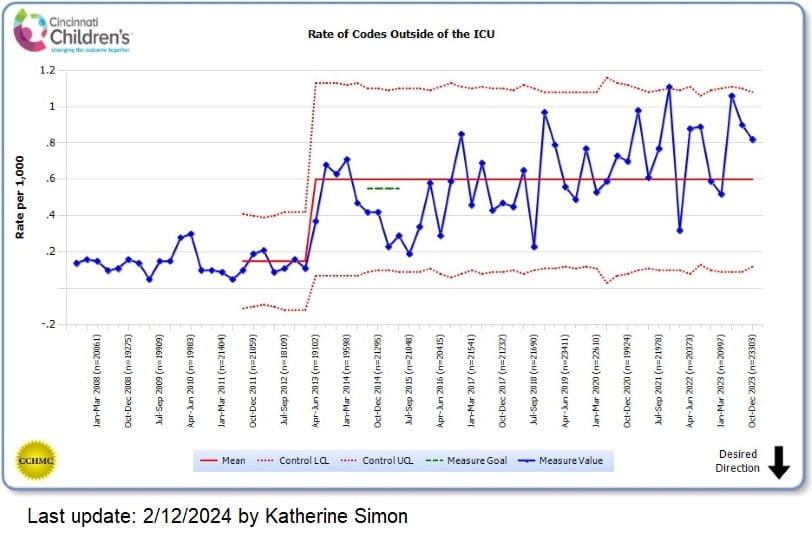Emergency Codes Outside the Intensive Care Unit (ICU)
Why this measure is important:
- A code is a life threatening situation in which emergency clinical interventions are required to prevent further patient deterioration and sustain life.
- It is important to know which children may be at risk for a code so that the medical team can intervene to make them better or transfer them to an intensive care area if needed.

Last update: 1/13/2025 by Katherine Simon
How we measure:
- We count the number of codes that occur outside the critical care areas for every 1,000 days that patients are hospitalized.
What are we doing to improve?
- A Medical Response Team (MRT) has been in place since 2004, and was created to help facilitate recognition of patients who are getting "sicker", to bring additional consultation to the bedside, and to help with appropriate evaluation and clinical intervention decisions to decrease codes outside the intensive care unit (ICU).
- To improve communication and collaborative patient care planning, we have implemented a standardized consultation process in the Pediatric Intensive Care Unit (PICU). Included are all members of the care team: nurses, respiratory therapists, residents, fellows and attendings from both the ICU and the general care unit.
- A standardized note is now available in the electronic medical record, enabling members of the care team easy access to the detailed plan of care.
- A dedicated committee evaluates all MRTs and Code events shortly after they occur. This near real-time review is used to identify opportunities and share learning that can be used to improve care and help prevent future occurrences.
View the Operational Definition: Emergency Codes Outside the Intensive Care Unit (ICU)



